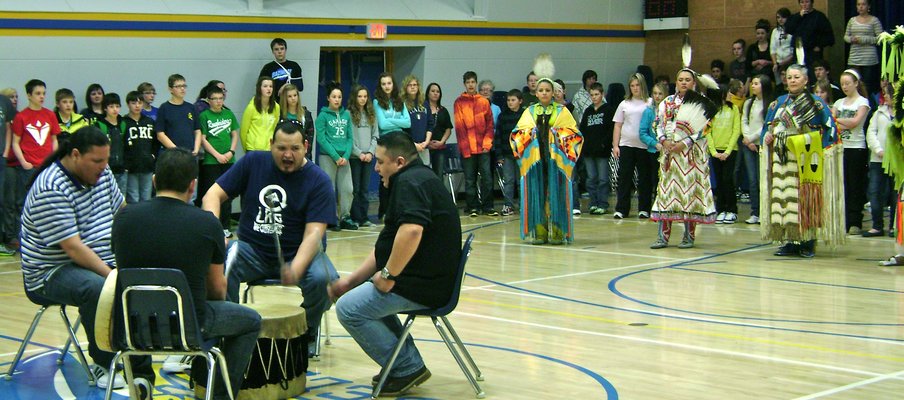
Living Histories – Treaty education in living sky school Division
In this issue
 Engage - Volume 4, Issue 3, Summer 2014
Engage - Volume 4, Issue 3, Summer 2014
Related Programs
There is more than one way to tell a story and the living sky school Division is bringing Treaty education to life through cultural experiences. Sherron Burns, learning consultant, Arts Ed and Treaty Ed, living sky school Division, says “My thinking was that we would call it ‘living Histories' because it wasn’t just about understanding one form of history, but that history has many paths and many stories, and it depends on who is telling the story as to what you are going to understand.”
Early in the process and throughout it, the division consulted with elder Fred Paskimin, other elders and community members. “That’s been a really important part of trying to ensure we’re doing things correctly, that we’re not moving too quickly, that we’re getting the advice we need, and the guidance living Histories – and the prayers we need, and the guidance to make this a good journey,” says Burns.
Before inviting schools to explore what they wanted to experience, Burns, along with storyteller Joseph Naytowhow and lawyer Deanne Kasokeo, did presentations for staff in each of the division’s 32 schools. They answered questions and opened up possibilities.
Burns wants the program to grow out of the needs of the schools by removing the barriers to communication and by building relationships. The program provides the links to resource people and the knowledge of correct protocols for communications and visits. As the project developed and the list of resource people grew, a Cultural Directory was created. The list currently has over 30 people, including: elders, knowledge and language keepers; and artists, people with specific talents, gifts, and knowledge they want to share with students.
"I wanted schools to feel comfortable bringing First Nations and Métis people in, but I also wanted First Nations and Métis people to feel comfortable coming into our schools," says Burns. “The program addressed how it could help make a school a good place for participants to go into, a safe place, where they felt they have something to offer, felt respected and valued."
The school division, located in northwest central Saskatchewan, is unique in its make¬up. It includes two Christian schools, one Catholic school and three Hutterite Colony schools. All of the schools in the division have benefitted from the program through the initial visits and the majority have enjoyed unique programming. Cultural activities have included traditional and contemporary focuses. They have ranged from classroom presentations including a mini Pow Wow and cultural fair, to a Skype interview between students in Unity with a rapper/journalist studying in Regina.
Living Histories-Treaty Education in Living Sky School Division grew out of support from SaskCulture's Aboriginal and Cultural Leadership (AACL) Grant. The project has proven so successful that funding from the division to Treaty and arts education has increased, and schools are increasing their own budgets to continue to grow the project.
"I feel the arts are a vehicle for bringing people together, working with artists can really excite the students. There is a lot of pain in the history. How do we begin to work with students and teachers in a way that is going to get us to acknowledge what we've gone through, but also how we think about a future that we share," says Burns. "I think the arts are a way to do that."

